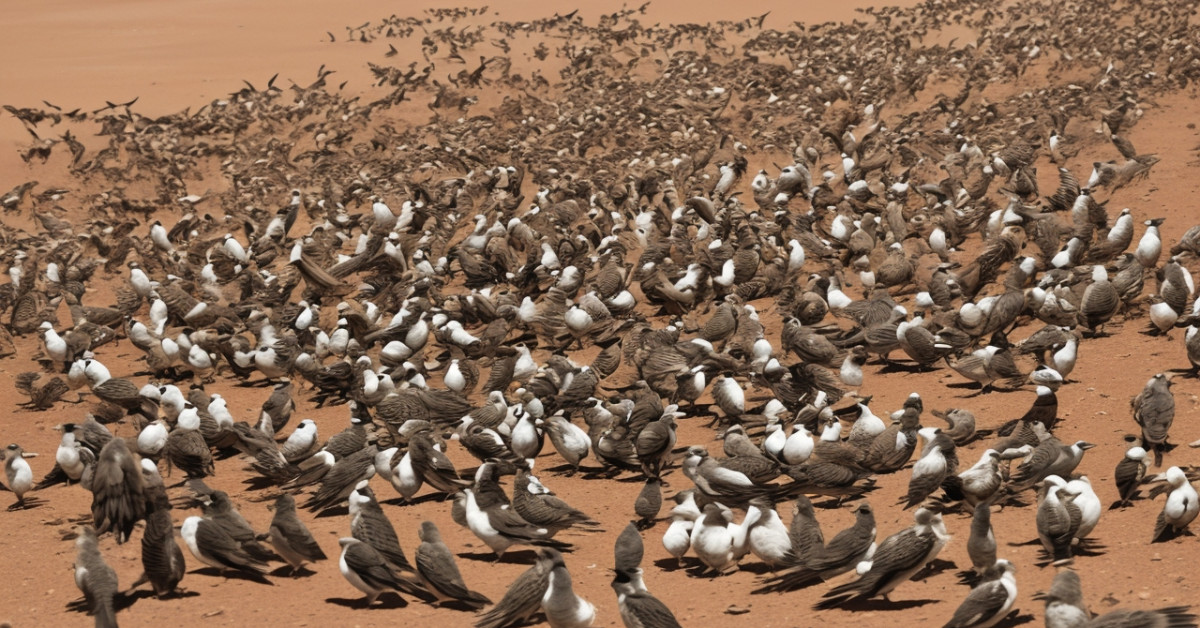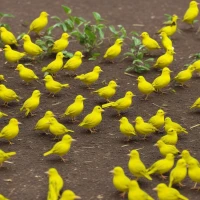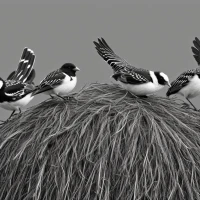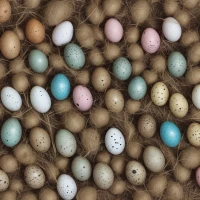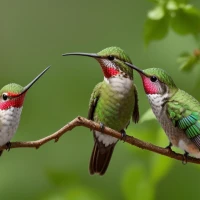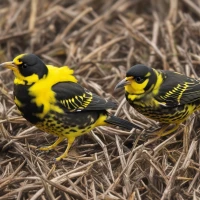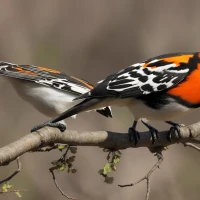Discover the Desert Birds of the Southwest: Hidden Gems Await for those eager to dive into the vibrant world of avian wonders camouflaged within arid landscapes. Have you ever wondered what dazzling creatures flutter beneath the scorching sun and the endless expanse of golden dunes? Prepare to embark on an adventurous flight where enigmatic birds reveal their secrets in nature’s toughest, yet most beautiful, habitats. Tempted by the thrill of uncovering these elusive treasures, bird enthusiasts and curious minds alike will be captivated by the unique wonders that call the desert home. Ready to join the quest? Hidden gems of the Southwest await!
Sources of Water for Desert Birds
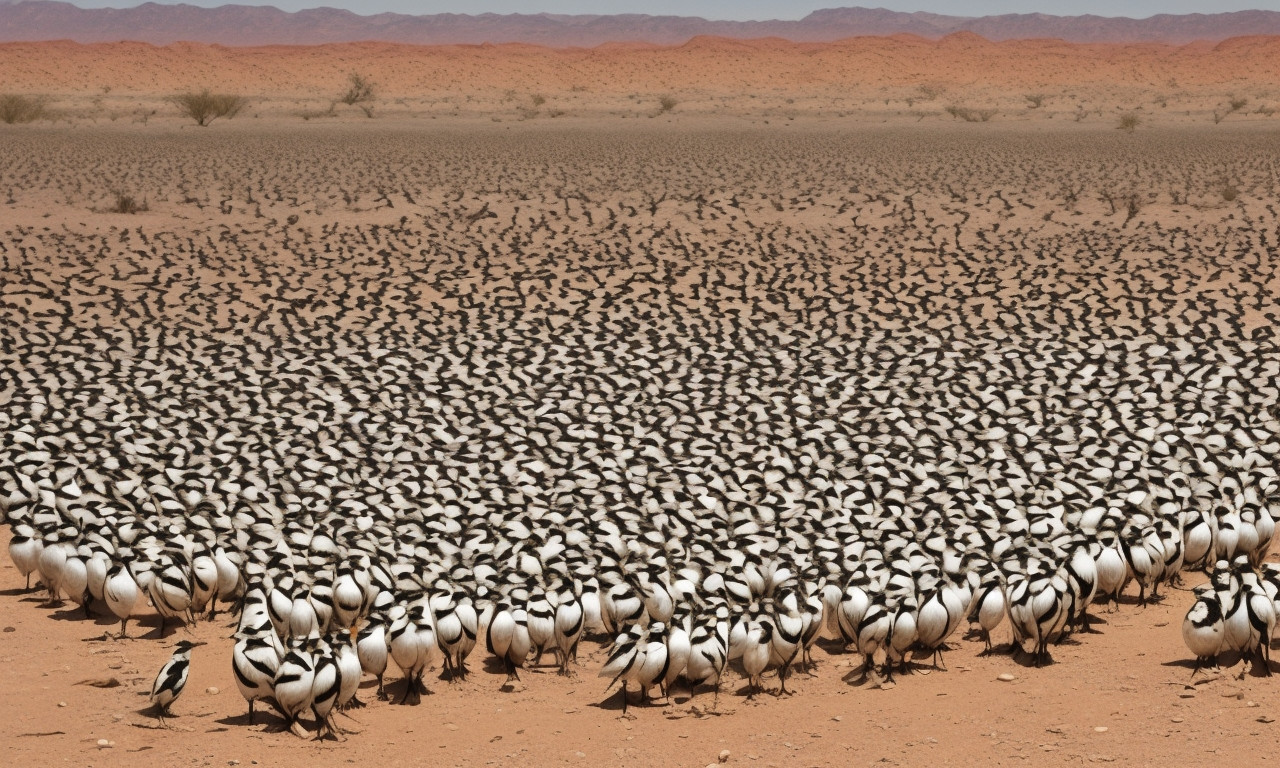
The vast and sunlit expanses of the Southwestern desert are home to a remarkable variety of avian life. These desert birds have adapted magnificently to their arid environment, showcasing a mesmerizing blend of resilience and beauty. One of the most crucial elements for their survival is the availability of sources of water for desert birds. Despite the scarcity, these feathered gems have developed ingenious ways to locate and utilize the limited water resources available to them.
Natural springs and ephemeral rain puddles, though rare, are lifelines for birds like the Gambel’s quail and the cactus wren. These astute creatures also depend on dew-laden plants and morning mists, skillfully extracting moisture from the desert flora. In addition, some desert birds are known to visit man-made water features, such as birdbaths and irrigation systems, which serve as crucial supplementary sources of water.
Beyond mere survival, these water sources allow the birds to thrive, enabling them to maintain their vibrant plumage and energetic behavior. Observing how these resourceful creatures utilize the available sources of water for desert birds offers an insightful glimpse into their adaptability and the intricate balance that sustains life in one of the most challenging environments on Earth. Hidden gems indeed await those who venture into the Southwest to witness these avian marvels.
What Do Desert Birds Eat?

The Southwest is a treasure trove for bird enthusiasts, offering a vast array of desert birds that have adapted to thrive in arid landscapes. These ecosystems, though seemingly harsh, are teeming with life as long as you know what to look for. One fascinating aspect is discovering what desert birds eat to survive in such an unforgiving environment.
From the majestic Harris’s Hawk to the tiny Verdin, these desert-dwelling avians have unique dietary habits. While some, like the Greater Roadrunner, are opportunistic hunters feeding on lizards, insects, and even small mammals, others like the Cactus Wren prefer seeds and fruits. The adaptability of their diets allows them to flourish where food resources are scarce and intermittent.
Another intriguing debate among ornithologists and bird watchers is, “What do desert birds eat to meet their nutritional needs?” The answer varies significantly among species but generally includes insects, seeds, nectar, and even small vertebrates. These birds also take advantage of seasonal blooms and fruiting plants, highlighting their versatility and resourcefulness.
Exploring the Southwest’s desert landscapes offers a unique opportunity to observe these resilient creatures and their feeding habits. Understanding what desert birds eat not only enriches the bird-watching experience but also provides valuable insight into the intricate food webs that sustain life in these arid regions. Hidden gems, indeed, await those willing to discover the diverse diets and adaptive strategies of desert birds.
Desert Bird Nests

Beneath the vast, sun-drenched skies of the Southwest, a unique world teems with life, waiting to be explored. Desert bird nests play a crucial role in this vibrant ecosystem, offering a glimpse into the lives of some of the most resilient avian species. Intricately constructed from twigs, feathers, and even snake skins, these nests serve as sanctuaries for a variety of desert birds, from the elusive elf owl to the vividly colored verdin.
Among the rugged rock formations and towering cacti, you can find these expertly crafted desert bird nests tucked away in surprising locations. Some birds prefer the hidden crevices of cliffs, while others opt for the lofty branches of a saguaro cactus. Each nest is a testament to the adaptability and ingenuity of its builder, often blending seamlessly with its surroundings to protect against predators and the harsh desert climate.
Exploring the Southwest’s desert bird nests provides not just a chance to witness the artistry of nature, but also to understand the delicate balance and survival strategies of these fascinating creatures. Embark on a journey to uncover these hidden gems and gain a deeper appreciation for the diverse avian life thriving in the arid landscapes of the Southwest.
How to Attract Desert Birds

Hidden within the vast and arid landscapes of the Southwestern United States are some of nature’s most vibrant and resilient avian species. The desert birds of this region, including the striking cactus wren, the colorful gilded flicker, and the elusive elf owl, have adapted beautifully to their harsh environment. Observing these winged wonders in their natural habitat offers a rare glimpse into the lives of some of the planet’s most fascinating creatures. For bird enthusiasts, knowing how to attract desert birds to your backyard can provide endless enjoyment and an up-close look at these hidden gems.
Creating a bird-friendly oasis in your desert garden is possible with a few thoughtful additions. Start by incorporating native plants such as agave, saguaro, and mesquite, which offer both nourishment and shelter. Providing a reliable water source, like a dripping birdbath or a small pond, is crucial in the arid climate. Offering high-energy foods such as suet, mealworms, and nectar can draw a diverse array of desert birds to your space.
By understanding how to attract desert birds, you not only enhance your backyard ecosystem but also contribute to the preservation of these unique species. With patience and the right environment, you’ll soon find that hidden gems of the desert are closer than you think.
12 Desert Birds You Should Know
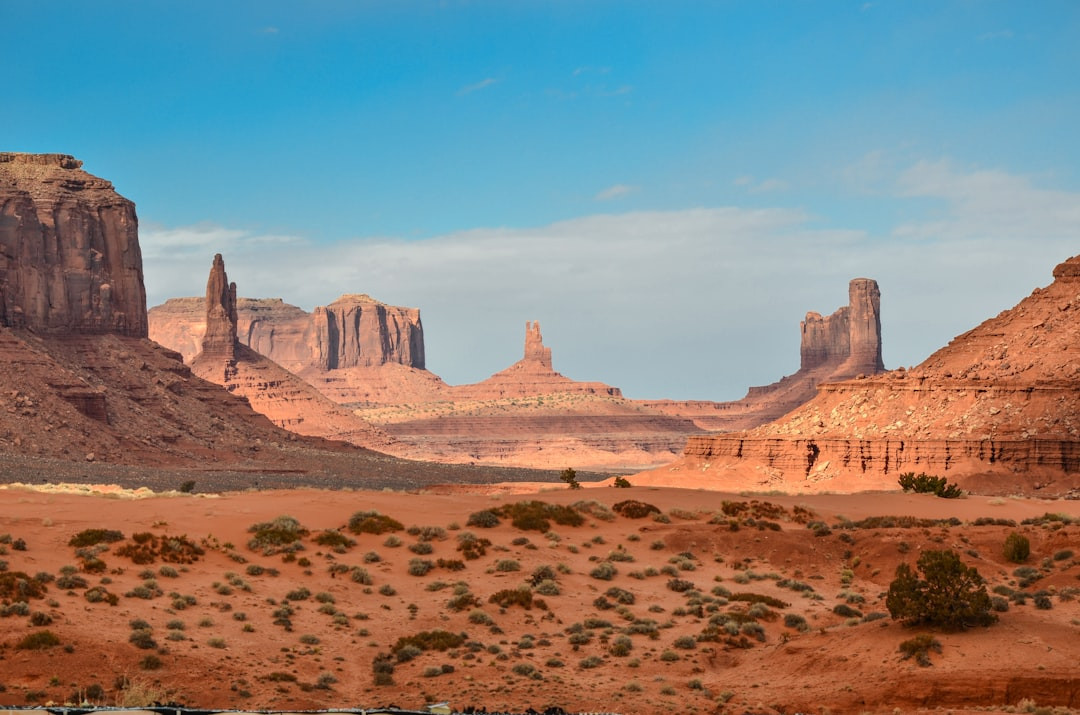
The Southwestern United States is home to a diverse array of avian wonders, each uniquely adapted to its harsh desert environment. Among these, 12 desert birds you should know stand out for their fascinating adaptations and striking appearances. From the majestic Red-tailed Hawk, soaring high above the arid landscape, to the tiny, yet resilient, Black-throated Sparrow, these birds exemplify nature’s resourcefulness. The Greater Roadrunner, an iconic symbol of the desert, is known for its surprising speed and agility, while the Gila Woodpecker’s distinctive call echoes through cacti groves.
Equally captivating are the cooperative behaviors of the Cactus Wren, often seen building nests within prickly pear cacti. Meanwhile, the stealthy Elf Owl, the tiniest owl in North America, finds refuge in abandoned woodpecker holes, bringing a sense of mystery to the twilight desert. The vibrant Vermilion Flycatcher brightens the landscape with its fiery plumage, and the Curve-billed Thrasher’s melodious songs add an auditory charm.
Other notable mentions include the Phainopepla, known for its striking black feathers and energetic flight patterns, and the Gambel’s Quail, with its distinctive topknot and communal lifestyle. These 12 desert birds you should know encapsulate the hidden gems awaiting discovery in the Southwest, offering a rewarding experience for avid bird watchers and nature enthusiasts alike.
Phainopeplas
Discover the Desert Birds of the Southwest: Hidden Gems Await
Embark on an unforgettable journey to explore the avian wonders of the Southwest’s deserts, where hidden gems like the Phainopeplas await keen birdwatchers. These sleek, black or glossy plumaged birds, with striking red eyes, epitomize the desert’s unique allure. Often spotted perched atop mesquite trees or flitting through the desert mistletoe, they are easily recognizable by their elegant crested heads.
Phainopeplas, a member of the silky flycatcher family, thrive in the arid, scrubby habitats of the Southwest, ranging from Arizona to California. Their presence resonates with the rhythm of the desert’s lifecycle, particularly because they play a crucial role in the dispersal of mistletoe seeds. Observing a Phainopepla feeding on succulent berries or catching insects mid-air offers a glimpse into the delicate balance of this ecosystem.
Explorers of these desert landscapes are rewarded with more than just the sight of the enigmatic Phainopeplas. They encounter an intricate tapestry of life, from the rugged cacti to the vibrant wildflowers that sporadically bloom. Each bird sighting deepens one’s appreciation for the resilience and beauty of desert wildlife. So grab your binoculars and immerse yourself in the captivating quest to discover the desert birds of the Southwest, where encounters with Phainopeplas and other avian treasures make each moment a cherished memory.
Black-Throated Sparrow
The Southwest’s deserts are a haven for bird enthusiasts, offering an array of unique avian species. Among the hidden gems awaiting discovery is the Black-Throated Sparrow, a true marvel of adaptation and beauty. This small bird, easily identified by its distinctive black throat, white eyebrow streaks, and gray plumage, thrives in the arid desert environment where temperatures soar and vegetation is scarce.
The Black-Throated Sparrow captivates with its melodic song, a series of clear whistles that resonate across the arid landscape. Observers will find this sparrow perched on low shrubs or foraging on the ground, where it skillfully uncovers seeds and insects. Well-adapted to the harsh conditions, it can often be seen around mesquite trees and cacti, using these plants for both shelter and sustenance.
Birdwatchers may also delight in observing the sparrow’s breeding behavior, particularly its neat, cup-shaped nests hidden among thorny branches. During the breeding season, the male’s territorial calls are especially prominent, signaling the presence of this resilient species.
Exploring the Southwest deserts offers a chance to uncover such fascinating avians. The Black-Throated Sparrow stands out not just for its striking appearance and song, but also as a testament to the wonders of desert biodiversity, proving that hidden gems indeed await those who venture into these rugged landscapes.
Gambel’s Quail
Explore the captivating world of desert birds in the Southwest, where hidden gems of the avian variety await your discovery. Among these remarkable creatures is the Gambel’s Quail, a quintessential species in this arid region. These birds are known for their distinctive teardrop-shaped topknot and striking plumage that blends seamlessly with the desert palette. Gambel’s Quail can often be spotted scurrying across the ground in small coveys, emitting their characteristic “chip-chip” calls that echo through the canyons.
Their habitat ranges from thorny shrubs to desert washes, and their diet is as diverse as the landscape, consisting of seeds, leaves, and the occasional insect. Observing these quails in their natural environment provides a glimpse into the delicate balance of life in the desert. The presence of Gambel’s Quail is a testament to adaptation and survival, showcasing nature’s resilience in even the harshest climates.
Bird enthusiasts and casual observers alike will find the desert Southwest a treasure trove of avian beauty. The Gambel’s Quail, with its charming appearance and fascinating behaviors, is a must-see for anyone looking to experience the rich biodiversity of this unique ecosystem. Venture into the desert and let the Gambel’s Quail guide your discovery of these hidden gems.
Greater Roadrunner
Nestled within the rugged landscapes of the American Southwest lies a world teeming with avian wonders. Among the most iconic of these hidden gems is the Greater Roadrunner. This fascinating bird, known for its speed and unique appearance, embodies the spirit of the desert.
The Greater Roadrunner, with its distinctive crest and long tail, can often be spotted darting across sandy trails or perched atop cacti, surveying its arid domain. Unlike typical birds, it prefers sprinting to flying, achieving impressive speeds on foot to catch prey or evade predators. Its diet is as diverse as the desert itself, ranging from insects and lizards to small snakes, even occasionally indulging in fruits and seeds.
Exploring the deserts, one might hear the Greater Roadrunner’s distinctive cooing or catch a glimpse of its sleek silhouette moving swiftly through the brush. Its presence is a testament to the adaptability and resilience required to thrive in such an unforgiving environment. Observing this bird in its natural habitat offers an unparalleled glimpse into the rich biodiversity of the Southwest.
For bird watchers and nature enthusiasts alike, the Greater Roadrunner is a symbol of the hidden beauty and intricate ecosystem of the desert. Each encounter with this remarkable bird unveils a new layer of the Southwest’s enigmatic charm.
Curve-Billed Thrasher and Cactus Wren
Embark on a journey to uncover the hidden gems of the Southwest’s deserts, where an enchanting array of birdlife awaits. Among these avian treasures, the Curve-Billed Thrasher stands out with its distinctive curved beak and intricate, melodious songs. This versatile bird navigates the arid landscapes with ease, often seen darting between thorny shrubs and cacti, making it a memorable sight for bird watchers and nature enthusiasts alike.
Equally captivating is the Cactus Wren, the largest wren species in the United States, known for its robust build and strikingly patterned plumage. True to its name, the Cactus Wren often makes its home within the prickly arms of cacti, using these natural fortresses to protect itself from predators. Its raspy call can be heard echoing through the desert, adding a unique soundtrack to the serene landscape.
Both the Curve-Billed Thrasher and the Cactus Wren exemplify the resilience and adaptability of desert birds, thriving in an environment that demands resourcefulness and endurance. Observing these birds offers a deeper appreciation of the desert’s rich biodiversity and the remarkable adaptations that allow life to flourish in such harsh conditions. Their presence serves as a vivid reminder of the hidden splendors that await those who venture into the Southwest’s desert sanctuaries.
Gila Woodpecker
Nestled within the arid landscapes of the American Southwest, an incredible variety of desert birds awaits discovery. Amidst the vast stretches of sun-baked terrain and sparse vegetation, bird enthusiasts can find true gems of avian life. One such hidden gem is the Gila Woodpecker. This iconic bird has developed an astonishing ability to thrive in harsh desert conditions, making it a perfect symbol of resilience and adaptation.
The Gila Woodpecker is often spotted darting around saguaro cacti, where it excavates holes to build its nests. These cacti provide crucial shelter not only for the woodpecker but also for a host of other desert dwellers. With a striking barred pattern on its back and distinctive black and white plumage, the Gila Woodpecker’s appearance is as captivating as its lively personality.
Apart from the Gila Woodpecker, the desert is home to many other fascinating species. From the vibrant desert hummingbirds to the majestic roadrunners, each bird plays a unique role in the ecosystem. Understanding their behaviors and habitats offers a deeper appreciation for the delicate balance of life in the Southwest.
Exploring these desert birds provides an enriching experience for amateur bird watchers and seasoned ornithologists alike. Whether through early morning excursions or quiet afternoon observations, the hidden gems of the desert offer endless opportunities for discovery.
Scott’s Oriole
Nestled within the vast and arid landscapes of the Southwest, a unique avian world thrives, offering bird enthusiasts unparalleled experiences. Among these feathered inhabitants, the Scott’s Oriole stands out as a hidden gem awaiting discovery. Known for its striking black and yellow plumage, this species adds a splash of vibrant color against the sandy backdrop of the desert.
Scott’s Oriole is often around yucca plants, from which it derives both sustenance and materials for nesting. Observing these beautiful birds involved in their daily routines is a sheer delight, especially as they flit gracefully from one yucca bloom to another. Their melodic songs are a testament to nature’s wonder, reverberating through the canyons and desert flora.
The allure of discovering Scott’s Oriole lies not just in its beauty but also in understanding its adaptation to the harsh desert environment. As you venture deeper into the Southwest’s rugged terrains, spotting this elusive bird becomes a rewarding challenge. Whether you are an avid birder or a casual observer, the experience of witnessing Scott’s Oriole in its natural habitat offers a unique glimpse into the intricate tapestry of desert life, truly showcasing the hidden gems of this remarkable region.
White-Winged Dove
The arid landscapes of the American Southwest, with their sprawling deserts and rugged terrains, are teeming with avian wonders. Among these hidden gems is the White-Winged Dove—an elusive beauty that adds a touch of elegance to the harsh desert environment. This bird, identifiable by its distinctive white-edged wings, offers bird enthusiasts and casual observers alike a mesmerizing glimpse into the secret life of desert avifauna.
White-Winged Doves thrive in the unique ecosystems of the Southwest, from the saguaro forests of Arizona to the scrublands of New Mexico. They are especially fond of areas with a mix of open ground and dense thickets, making them a delightful challenge to spot against the backdrop of sandy hues and thorny vegetation. Their cooing calls and melodious songs fill the air, providing an auditory treat that enhances the immersive experience of desert exploration.
Beyond their visual and auditory appeal, White-Winged Doves play a vital role in their habitat. They contribute to the dispersion of seeds, particularly those of the saguaro cactus, ensuring the resilience and continuity of their ecosystem. To truly appreciate the beauty and significance of these desert birds, one must venture off the beaten path and embrace the challenge of discovering the hidden gems of the Southwest.
Verdin
The Southwest desert is a haven for avian enthusiasts, particularly those with a penchant for discovering hidden gems. One bird species that epitomizes the unique allure of this region is the Verdin. These small, energetic birds are often overlooked, yet they possess an undeniable charm. With their striking yellow heads and petite, silver-blue bodies, Verdins expertly blend into the sparse desert foliage, making every sighting a thrilling experience.
Verdins are commonly found flitting among the thorny branches of mesquite and acacia trees, busily foraging for insects and spiders. Their industrious nature is evident as they hop from twig to twig, their keen eyes scanning for their next meal. Despite their size, Verdins are formidable when it comes to nest building, often creating intricate, globe-shaped structures composed of twigs and leaves to protect their young from the harsh desert conditions.
Birdwatchers who venture into the desert can expect more than just dry, barren landscapes. The presence of the Verdin and other desert birds brings a vibrant splash of life and color to the arid environment. Observing these nimble creatures in their natural habitat is a reminder of the resilience and beauty that flourishes, even in the most unforgiving climates. Keep your binoculars handy; you never know when a Verdin might emerge from the desert shadows.
Costa’s Hummingbird
Discover the Desert Birds of the Southwest: Hidden Gems Await as you delve into the enchanting world of avian wonders uniquely adapted to arid landscapes. While traversing these sun-drenched terrains, one cannot overlook the mesmerizing Costa’s Hummingbird. This tiny gem, with its iridescent purple throat and crown, is a true spectacle to behold. Known for its dazzling courtship displays, the male Costa’s Hummingbird performs mesmerizing dives and arcing flights to attract potential mates.
The Southwest’s desert ecosystem is a treasure trove for bird enthusiasts, offering a fascinating array of species beyond the Costa’s Hummingbird. Yet, this bird stands out with its unique ability to thrive in harsh, water-scarce environments. Often found flitting among the vibrant blooms of desert flora, the Costa’s Hummingbird feeds on nectar, playing a crucial role in pollination.
Equipped with specialized adaptations, this hummingbird exemplifies the incredible resilience and beauty of desert avifauna. Whether observing these birds in their natural habitat or studying their behavior up close, the allure of the Costa’s Hummingbird is undeniable. Embrace the opportunity to witness these avian jewels as you uncover the hidden gems of the Southwest’s desert birding experience.
4 North American Deserts to Explore

Nestled within the arid splendor of the American Southwest lies an avian paradise teeming with vibrant species just waiting to be discovered. A fascinating variety of desert birds can be observed amidst the striking landscapes of the 4 North American Deserts to Explore, making this region a must-visit for bird enthusiasts and nature lovers alike. From the expansive Sonoran Desert’s iconic Gila woodpeckers and verdin to the Mojave Desert’s resilient roadrunners, the diversity here is astounding.
Venture further into the Chihuahuan Desert, where you may encounter the elegant scaled quail and the vivid pyrrhuloxia. Meanwhile, the Great Basin Desert offers sightings of the elusive sage thrasher and Brewer’s sparrow, hidden gems that make this desert a peaceful retreat for birdwatching. Each of these 4 North American Deserts to Explore presents a unique ecosystem and a kaleidoscope of avian life adapted to survive in these harsh, yet striking environments.
Whether you’re an avid birder or simply seeking a deeper connection with nature, the Southwest’s deserts offer unparalleled opportunities to observe these feathered wonders. The stark beauty of these terrains is enhanced by the delicate presence of its avian inhabitants, making the exploration of these 4 North American Deserts an unforgettable experience.
Chihuahuan Desert
The Chihuahuan Desert, an expansive and biologically diverse region of the Southwest, is a paradise for bird enthusiasts seeking to discover the desert birds of the area. This arid landscape, characterized by its unique flora and rugged terrain, is home to an array of hidden avian gems awaiting discovery. Birdwatchers can expect to encounter species uniquely adapted to the harsh, yet stunning environment of the Chihuahuan Desert.
One of the most notable residents is the striking Gambel’s Quail, with its distinctive topknot and social behaviors. The elegant Scaled Quail, often referred to as “cottontops” due to their white-tipped feathers, also thrive here. Beyond quails, the desert sky is often graced by the sight of the magnificent Peregrine Falcon, known for its incredible hunting speed. Another resident, the Greater Roadrunner, is a symbol of the Southwest, darting through the desert as it hunts for prey.
Smaller songbirds like the Verdins and Cactus Wrens add a melodic backdrop to the landscape, creating a symphony that celebrates the desert’s life. Birdwatching trails throughout the Chihuahuan Desert provide ample opportunities to observe these species in their natural habitats, offering a truly immersive and unforgettable experience. For those passionate about avifauna, the hidden gems of the Chihuahuan Desert offer a vibrant and captivating adventure into the wonders of desert birdlife.
The Mohave Desert
The Mohave Desert, a sprawling expanse of arid land, is home to some of the Southwest’s most fascinating bird species. This unique ecosystem brims with life, especially among the elusive desert birds that dwell in its sparse yet vibrant flora. Venturing into this vast landscape, you’ll be greeted by the sight of stunning avian species like the cactus wren, known for its intricate nests built in the protective spines of cacti. The quail, with its distinct call, scurries across the sandy terrain, while the majestic red-tailed hawk soars high above, scanning for prey.
In this desert oasis, bird enthusiasts can witness the rare beauty of the gilded flicker and the phainopepla, each adapted to survive and thrive in harsh conditions. These hidden gems of the Mohave Desert often require patience and a keen eye to spot, making their discovery all the more rewarding. The interconnected ecosystems, from the Joshua trees to the scrublands, create a tapestry of habitats that sustain these remarkable desert birds. For those eager to uncover the secrets of the Southwest’s desert avian life, the Mohave Desert offers an unparalleled adventure into the heart of nature’s undisturbed splendor.
Great Basin Desert
Nestled within the desolate expanse of the Great Basin Desert lies an avian paradise waiting to be discovered. This vast, arid landscape, often overlooked, harbors a rich tapestry of birdlife, making it a prime location for bird enthusiasts. From the melodious calls of the cactus wren to the striking visuals of the burrowing owl, these feathered inhabitants offer a stunning contrast to the rugged terrain.
The Great Basin Desert is a unique ecosystem teeming with life, and its birds are no exception. Visitors might spot the swift peregrine falcon cutting through the crisp air or the vibrant plumage of the western tanager adding splashes of color to the desert palette. Additionally, small, overlooked species like the sagebrush sparrow find sanctuary among the arid scrub, showcasing the incredible adaptability of desert birds.
Exploring this hidden gem provides a deeper appreciation for the diverse wildlife that thrives under seemingly harsh conditions. Guided tours and bird-watching expeditions offer enthusiasts the chance to observe these avian wonders up close, highlighting the importance of conservation efforts in maintaining this delicate habitat. The Great Basin Desert, with its striking beauty and incredible bird diversity, invites you to unravel its secrets and witness the hidden gems of the Southwest.
Sonoran Desert
The Sonoran Desert, an expansive and diverse ecosystem, is home to some of the most captivating bird species in the Southwest. Nestled between arid landscapes and rugged terrains, these feathered residents offer a mesmerizing showcase of nature’s artistry. From the vibrantly colored Vermilion Flycatcher to the iconic and resourceful Greater Roadrunner, each bird species plays a crucial role in the desert’s intricate tapestry.
Exploring the Sonoran Desert not only reveals a stunning variety of avian life but also uncovers hidden gems that often go unnoticed. The majestic Harris’s Hawk, known for its unique social hunting strategies, can be spotted soaring elegantly among the saguaros. Meanwhile, the Cactus Wren, with its inquisitive and energetic nature, utilizes the desert flora for both nesting and sustenance, embodying the true spirit of adaptation.
Photographers and bird enthusiasts alike find endless opportunities to witness these birds in their natural habitats, especially during the early morning hours when the desert awakens with a symphony of calls and songs. By immersing yourself in the Sonoran Desert, you not only discover its avian treasures but also develop a deeper appreciation for the resilience and beauty that defines this remarkable region.

